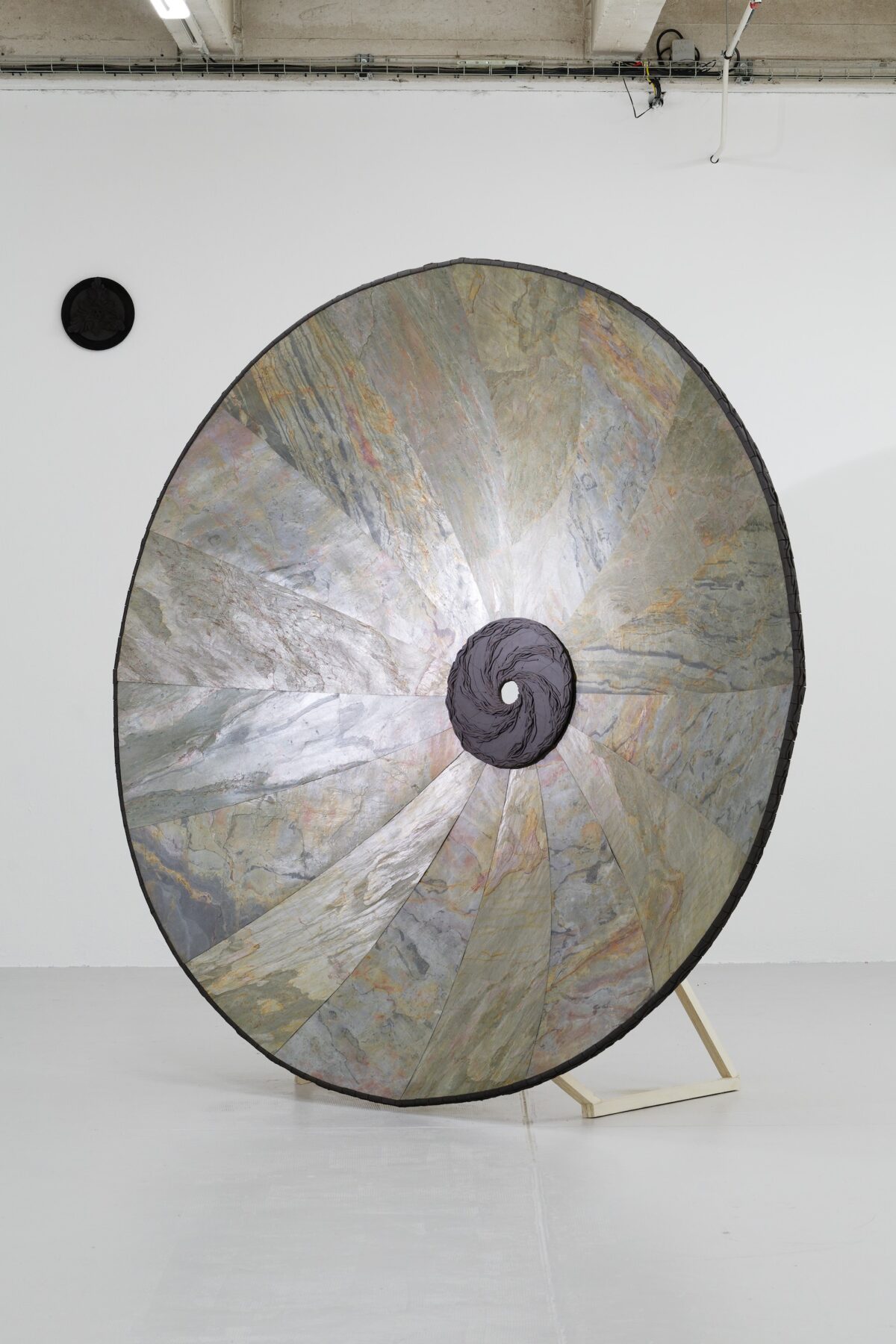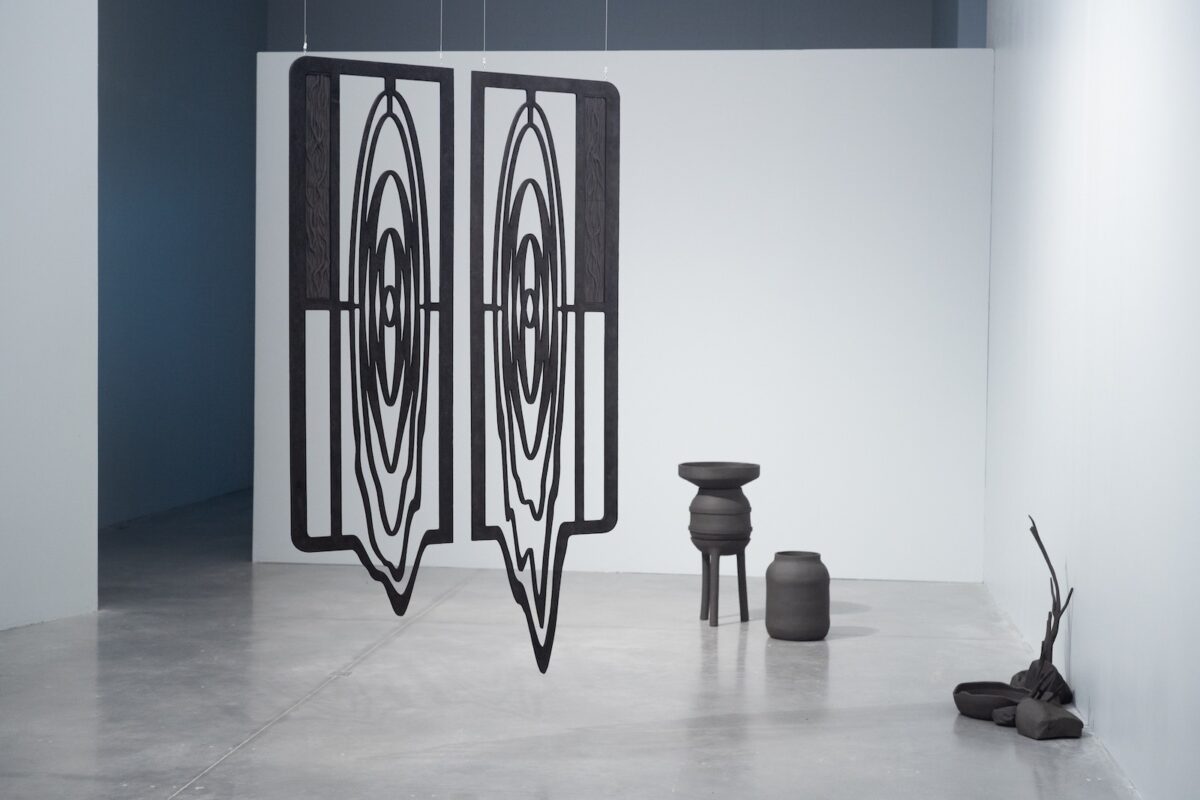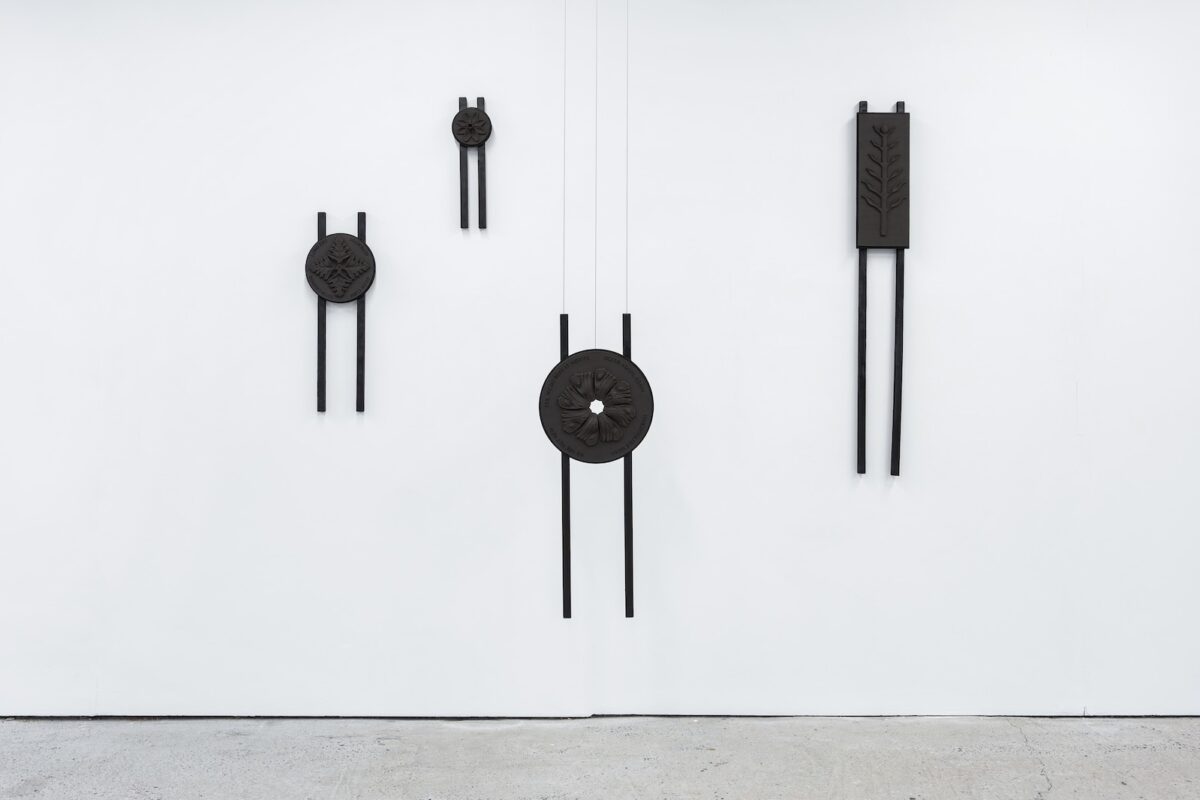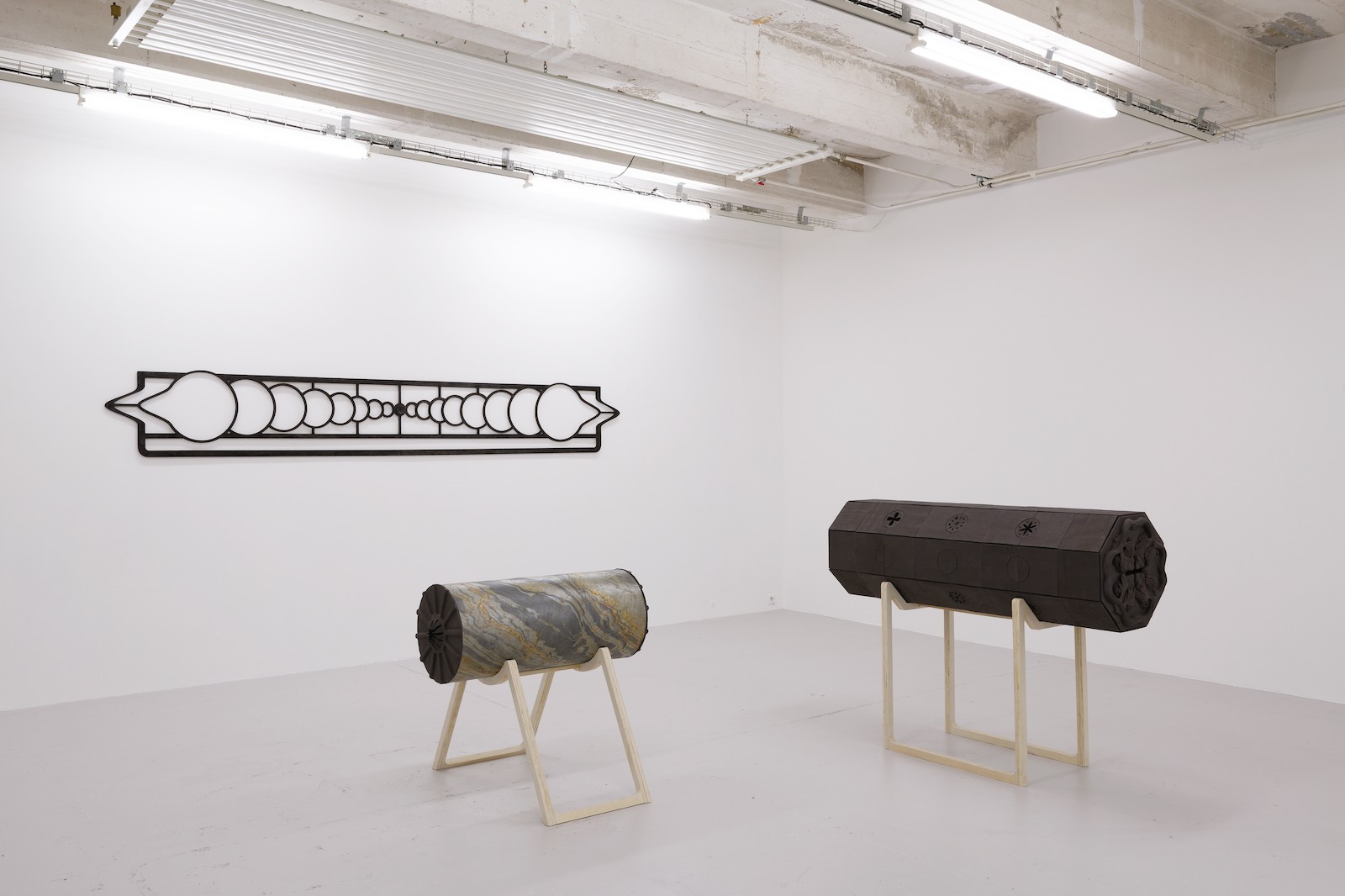How do you describe your own art practice?
My work explores the relationship between belief, spirituality, and the way we construct meaning in the world. Through sculpture and installation, I question the dominance of a purely rational and materialistic vision by revealing the underlying elements of faith embedded even in scientific thought. By blending forms inspired by religious symbols, esoteric traditions, and scientific instruments, my sculptures create a dialogue between these seemingly opposing systems of knowledge.
I am particularly interested in how reconnecting with a spiritual perspective can contribute to a more harmonious society, both socially and environmentally. My work often draws from pagan spiritualities and alchemical practices to challenge the way we perceive reality, encouraging contemplation and a reassessment of the invisible forces, whether cultural, natural, or metaphysical, that shape our existence.
The immersive nature of my installations plays a key role in this exploration. Large-scale works engage the body directly, creating a sense of awe and smallness, much like facing a vast natural landscape. The mineral aspect of my sculptures evokes deep, geological time, reinforcing a sense of continuity between past and present spiritual practices. Ultimately, my work aims to open pathways toward new forms of spirituality, or at least new ways of relating to the world, by weaving together science, symbolism, and contemplation.

ceramic, wood and mica veneer, 260x260x100cm. (photo : Aurélien Mole©)
Which question or theme is central in your work?
At the core of my work lies an exploration of belief systems and their impact on our perception of reality. I explore how symbols, from ancient religions to contemporary scientific diagrams, carry echoes of faith. The eternal dialectic between reason and spirituality underpins my work, and I seek to create a space where this tension becomes a catalyst for transformation. In this way, my sculptures and installations question the boundaries between reason and faith, materiality and transcendence, the visible and the invisible.
A recurring theme in my practice is the transformation of matter, both in a literal and symbolic sense. The materials I work with, calcined wood and ceramics, undergo alchemical-like processes, such as burning or firing, echoing notions of destruction, purification, and rebirth. This reflects a broader reflection on change: how do we move from one state of being to another? How do we navigate loss and transition in order to create new narratives? Alchemical nigredo, the idea that any transformation is only possible if we first go through a phase of stripping, accepting to lose something and mourning it in order to nourish a new cycle. The colour black in my installations also refers more broadly to the dark, the invisible, our inner worlds. In the same vein, my sculptures often take on hollow forms, like bodies filled with an invisible presence, or window shapes that also evoke this notion of the border between the psychic and physical worlds.
My work also explores the dialogue between science and spirituality. I am particularly interested in the way scientific objects, such as parabolas or particle accelerators, carry a hidden element of belief. By blending these forms with religious symbols and esoteric patterns, I seek to reveal the underlying mythologies embedded in rational thought. Inspired by Bruno Latour’s reflections on the construction of knowledge, I challenge the assumption that science and spirituality exist in opposition. Instead, I present them as two parallel systems that both seek to understand the mysteries of existence.

ceramic, calcined wood and audio tape, 310x310x260cm (photo : Frédéric Iovino©)
What was your first experience with art?
When I was a child, I loved making sets and environments in which I would then imagine scenarios. I used to spend hours carefully arranging my toys, making models and cardboard objects before introducing the action of the characters. When I look back on it today, I see a fairly obvious link with the importance I now attach to the scenographic aspect in my artistic practice. I construct each of my exhibition projects as environments, with sets of sculptures that, while having their own autonomy, benefit from being presented and interacting together. I give a great deal of thought to the balance of their composition in space, and the wandering it implies for viewers.
I’ve always loved creating objects and discovering techniques. I remember my first experiments with drawing, painting, papier-mâché, salt dough and so on. These discoveries were my first experience of art. Later, around the age of 13, I remember being particularly struck by a visit to a retrospective exhibition on the work of Jean-Michel Basquiat at MAM Paris, which inspired me to keep taking an interest in art.

Frac Bretagne, Rennes. (photo : Tania Gheerbrant©)
What is your greatest source of inspiration?
My greatest source of inspiration comes from symbolic forms and spiritualities, encompassing religions and esoteric traditions. I’m particularly drawn to the symbols, ornamentation, and geometric harmony found in nature, religious architecture, and ancient manuscripts. These elements suggest a holistic view of the world, one where all things are interconnected.
I’m fascinated by how natural elements have symbolic relationships with architecture: trees as columns, domes as skies, and crosses representing the human body. These forms reflect an ancient, organic vision of the world rooted in the “sympathy of all things,” a concept that highlights the intrinsic connections between different aspects of nature. This worldview, which predates modern capitalist and mechanistic visions, was beautifully explored in Carolyn Merchant’s The Death of Nature.
Additionally, I’m inspired by ornamentation and symbols that cannot be rationally decoded but instead speak to the subconscious. Each person interprets these symbols through their own prism, making contemplation a central practice. It allows for a deeper connection with our surroundings and fosters a sense of harmony and attunement with the environment.

ceramic, wood, 50x115x120cm, Space observatory collection - CNES. (photo : Germain Marguillard©)
What do you need in order to create your work?
First and foremost, I need time, both for research and reflection, and then for the long, meticulous process of production. Since I work with traditional craft techniques such as ceramics and wood, each step requires patience and precision. The geometric tracing and the modeling of ornaments demand a high level of detail, and each material follows its own rhythm: wood allows for relatively rapid shaping, while clay requires a much slower, meditative process. Working with clay means collaborating with the material, listening to it: knowing when to shape, refine details, and fire it, all depending on its drying time.
In terms of materials, I primarily need clay and wood, but I also adapt to the resources available in the places where I work. However, a minimum amount of space is essential, as well as specific tools, particularly access to ceramic kiln and woodworking equipment, to bring my sculptures to life.

L'H du Siège, Valenciennes (photo : Frédéric Iovino©)
What work or artist has most recently surprised you?
Frederik Exner’s exhibition GNOMON at Tranen (Hellerup, Denmark).

ceramic and calcined wood, 36x100x6cm. (photo : Frédéric Iovino©)




